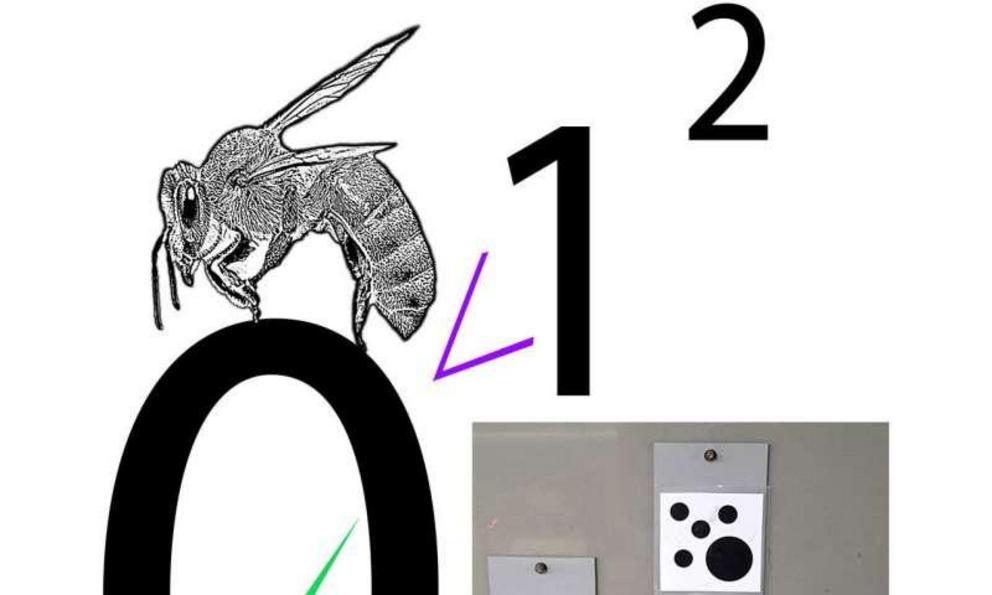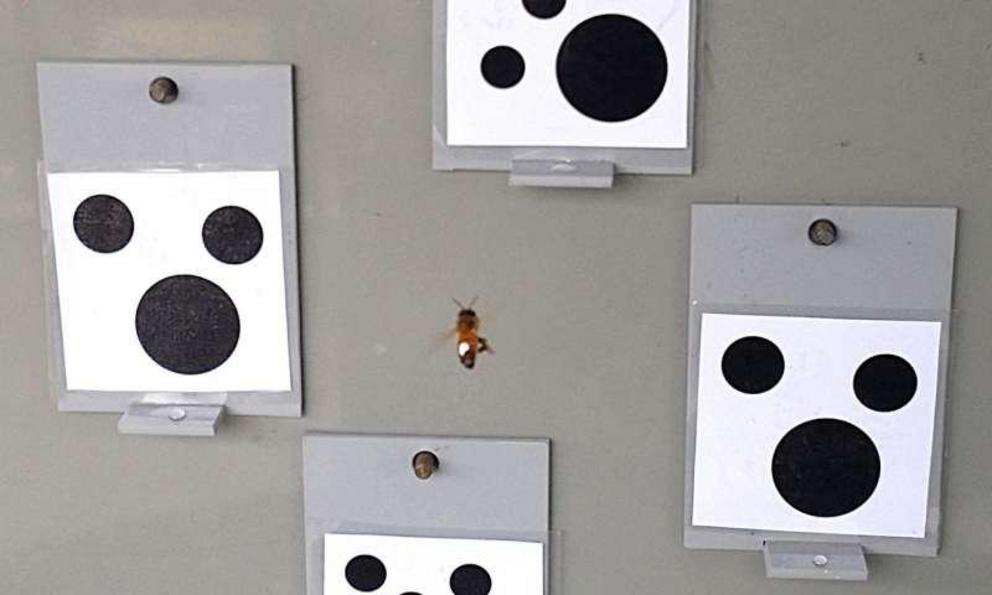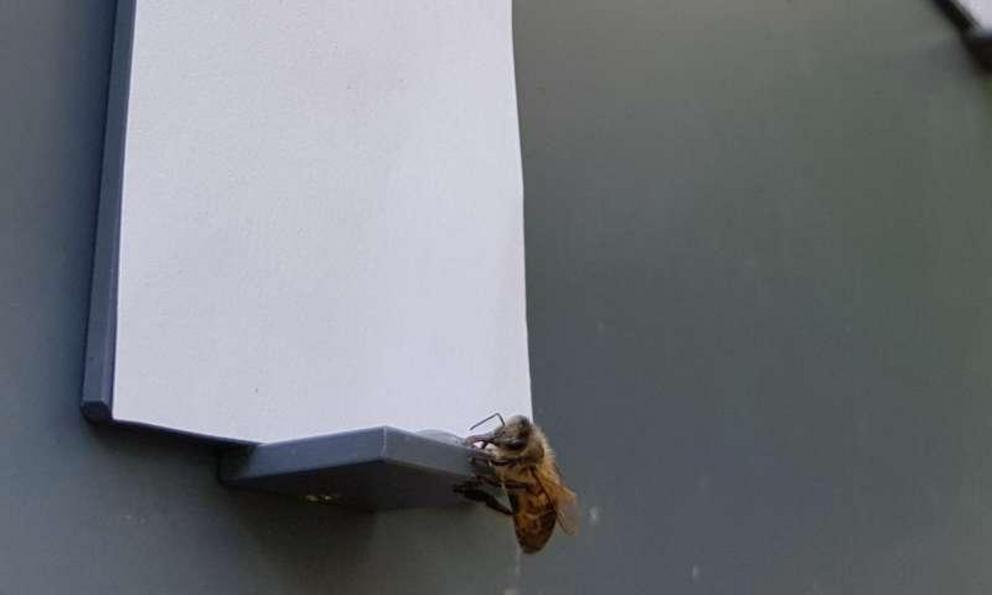Scientists discover bees understand the concept of zero
Scientists have discovered honeybees can understand the concept of zero, putting them in an elite club of clever animals that can grasp the abstract mathematical notion of nothing.
By demonstrating that even tiny brains can comprehend complex, abstract concepts, the surprise finding opens possibilities for new, simpler approaches to developing Artificial Intelligence.
In research published in the journal Science, Australian and French researchers tested whether honey bees can rank numerical quantities and understand that zero belongs at the lower end of a sequence of numbers.
Associate Professor Adrian Dyer, from RMIT University in Melbourne, Australia, said the number zero was the backbone of modern maths and technological advancements.
"Zero is a difficult concept to understand and a mathematical skill that doesn't come easily—it takes children a few years to learn," Dyer said.
"We've long believed only humans had the intelligence to get the concept, but recent research has shown monkeys and birds have the brains for it as well.
"What we haven't known—until now—is whether insects can also understand zero."
As well as being a critical pollinator, the honeybee is an exceptional model species for investigating insect cognition, with previous research showing they can learn intricate skills from other bees and even understand abstract concepts like sameness and difference.
But bee brains have fewer than 1 million neurons—compared with the 86,000 million neurons of a human brain—and little was known about how insect brains would cope with being tested on such an important numeric skill.
RMIT Ph.D. researcher Scarlett Howard set out to test the honeybee on its understanding, marking individual honeybees for easy identification and luring them to a specially-designed testing apparatus.
The bees were trained to choose an image with the lowest number of elements in order to receive a reward of sugar solution.
For example, the bees learned to choose three elements when presented with three vs. four; or two elements when presented with two vs. three.
When Howard periodically tested the bees with an image that contained no elements versus an image that had one or more, the bees understood that the set of zero was the lower number—despite never having been exposed to an "empty set".
 Schematic representation of how over a period of time bees learn to choose between combinations of numbers such that the lower number is correct, and then when presented with a problem of zero elements versus the higher numbers bees understand that zero i
Schematic representation of how over a period of time bees learn to choose between combinations of numbers such that the lower number is correct, and then when presented with a problem of zero elements versus the higher numbers bees understand that zero i
Dyer, a researcher in the Bio Inspired Digital Sensing-Lab (BIDS-Lab) in RMIT's Digital Ethnography Research Centre, said the findings opened the door to new understandings of how different brains could represent zero.
"This is a tricky neuroscience problem," he said.
"It is relatively easy for neurons to respond to stimuli such as light or the presence of an object but how do we, or even an insect, understand what nothing is?
"How does a brain represent nothing? Could bees and other animals that collect lots of food items, have evolved special neural mechanisms to enable the perception of zero?
"If bees can learn such a seemingly advanced maths skill that we don't even find in some ancient human cultures, perhaps this opens the door to considering the mechanism that allows animals and ourselves to understand the concept of nothing."
 An individually marked honeybee inspects stimuli with either 3 or 4 elements before choosing to land on the correct “lower” number. After learning this type of rule with many combinations, bees understand that an unfamiliar presentation of an empty set is
An individually marked honeybee inspects stimuli with either 3 or 4 elements before choosing to land on the correct “lower” number. After learning this type of rule with many combinations, bees understand that an unfamiliar presentation of an empty set is
One of the problems in the development of artificial intelligence is enabling robots to operate in very complex environments, Dyer said.
"Crossing a road is simple for adult humans, we understand if there are no approaching cars, no bikes or trams, then it is probably ok to cross," he said.
"But what is zero, how do we represent this for so many complex object classes to make decisions in complex environments?
"If bees can perceive zero with a brain of less than a million neurons, it suggests there are simple efficient ways to teach AI new tricks."
The research was conducted in both Australia and France and involved many control experiments to validate the findings.
Study co-author, Dr. Aurore Avarguès-Weber from the University of Toulouse in France, said: "The discovery that bees can show such elaborated understanding of numbers was really surprising given their tiny brain."
"Large brains are thus not necessary to play with numbers. This capacity is therefore probably shared by many other animals."
The paper "Numerical ordering of zero in honeybees" is published in Science today.
More information: S.R. Howard el al., "Numerical ordering of zero in honey bees," Science (2018). science.sciencemag.org/cgi/doi … 1126/science.aar4975
Journal reference: Science
Provided by: RMIT University

